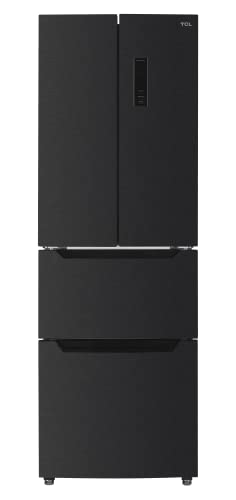The Comprehensive Guide to Refrigerators in the UK
Refrigerators are a necessary home appliance in every household, serving an essential function in food conservation and security. The UK market provides a diverse variety of fridge types, sizes, functions, and brand names. This article intends to offer an in-depth understanding of fridges readily available in the UK, including their features, energy effectiveness, and factors to consider when making a purchase.
Types of Refrigerators Available in the UK
When looking for a refrigerator, it is very important to comprehend the numerous types offered. Each type comes with its own set of features and functions, accommodating various needs and choices. The most common kinds of refrigerators found in the UK include:
1. Leading Freezer Refrigerators
- Description: The standard style, featuring the freezer compartment on top.
- Pros: More inexpensive, roomy, simple access to fresh food.
- Cons: Limited freezer space, the top might be less convenient for bulk products.
2. Bottom Freezer Refrigerators
- Description: Freezer lies at the bottom, allowing easier access to fresh food.
- Pros: Greater convenience, better visibility of fresh items.
- Cons: Usually more pricey, some might have a hard time with large frozen products.
3. Side-by-Side Refrigerators
- Description: Features 2 vertical compartments, one for the fridge and one for the freezer.
- Pros: Ample storage space, simple to access both frozen and fresh foods.
- Cons: Wider footprint, they may not fit in smaller kitchens.
4. French Door Refrigerators
- Description: Combines features of bottom freezers and side-by-sides, with two doors for the fridge on top.
- Pros: Stylish style, large, and typically consists of innovative functions.
- Cons: Higher rate point, aligns badly with smaller kitchen area designs.
5. Compact Refrigerators
- Description: Smaller designs created for limited spaces.
- Pros: Ideal for studio apartments or workplaces, energy-efficient.
- Cons: Limited storage capacity, might do not have functions.
6. Integrated Refrigerators
- Description: Designed to blend flawlessly with kitchen area cabinets.
- Pros: Custom fit, aesthetic appeal, increases home worth.
- Cons: Higher expense, may use less versatility in placement.
7. Smart Refrigerators
- Description: Equipped with Wi-Fi and wise innovation features.
- Pros: Advanced features like touch screens and internal electronic cameras.
- Cons: Expensive, more complicated to repair.
| Refrigerator Type | Accessibility | Average Price Range | Energy Efficiency |
|---|---|---|---|
| Top Freezer | Moderate | ₤ 300 - ₤ 600 | Typical |
| Bottom Freezer | High | ₤ 400 - ₤ 800 | Above Average |
| Side-by-Side | Easy | ₤ 800 - ₤ 1500 | Varies |
| French Door | High | ₤ 800 - ₤ 2000 | High |
| Compact | Minimal | ₤ 200 - ₤ 500 | Average |
| Integrated | Custom | ₤ 1000 - ₤ 2500 | High |
| Smart | Variable | ₤ 1200+ | High |
Secret Features to Consider
- Energy Efficiency: Look for models that are energy-efficient. In the UK, devices are rated from A (most effective) to G (least effective). An A+ rating and above can result in considerable energy cost savings.
- Capability: Choose a fridge with sufficient capacity for your home. A basic guideline is 100-200 liters per person.
- Noise Level: Consider designs that operate silently, specifically if the cooking area is near living spaces.
- Cooling Technology: Features like frost-free innovation deserve the investment, as they decrease upkeep.
- Adjustable Shelves: Having adjustable shelves enhances the flexibility to save larger items.
- Temperature level Control: Check for user friendly temperature level controls and zones for different kinds of food.
- Style: Choose the design and color that matches your kitchen aesthetic, whether you choose a contemporary stainless steel look or a classic retro surface.
Purchasing Tips
- Determine Your Needs: Consider your cooking routines, family size, and kitchen area.
- Set a Budget: Refrigerators been available in various price ranges. Establish a budget before you begin going shopping.
- Research Study Energy Ratings: Invest in energy-efficient designs to conserve on energy bills.
- Read Reviews: User experiences can offer insights into dependability and efficiency.
- Compare Brands: Some brand names are known for their resilience while others might provide more innovative functions.
Often Asked Questions (FAQs)
1. How long do fridges usually last?
- Fridges typically last in between 10 to 20 years, depending on the brand and how well they are maintained.
2. Are there any maintenance pointers for extending the life of a refrigerator?
- Frequently tidy the coils, inspect the door seals, and occasionally defrost if needed to preserve optimum efficiency.
3. What is the best size refrigerator for a household of four?
- For a household of 4, a refrigerator with a capability of around 400-600 liters is normally enough.
4. Do I need to stress about energy usage when purchasing a refrigerator?
- Yes, energy usage is very important. Try to find units with high energy effectiveness rankings to minimize monthly costs.
5. Should related resource site choose a fridge with a water and ice dispenser?
- This feature can be practical, especially for families. However, it might need more maintenance than basic models.
Acquiring a refrigerator is a considerable choice for any household in the UK. With various types readily available, each with its special functions and benefits, it is essential to examine private needs before choosing. By thinking about aspects such as energy performance, capability, and style aesthetic appeals, consumers can pick a fridge that aligns well with their lifestyle, ultimately improving their kitchen experience while securing food quality and freshness.

